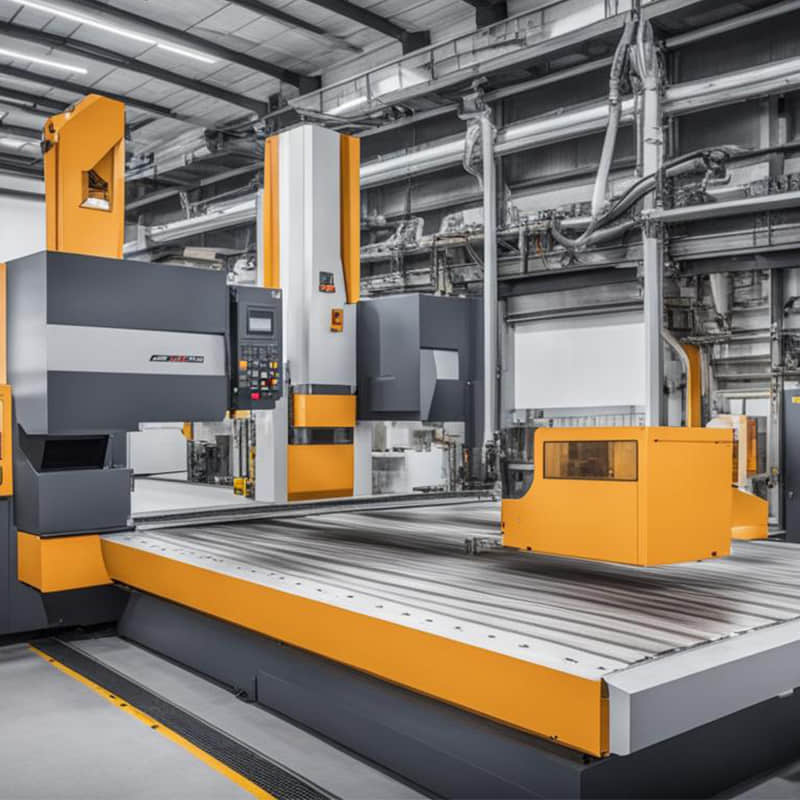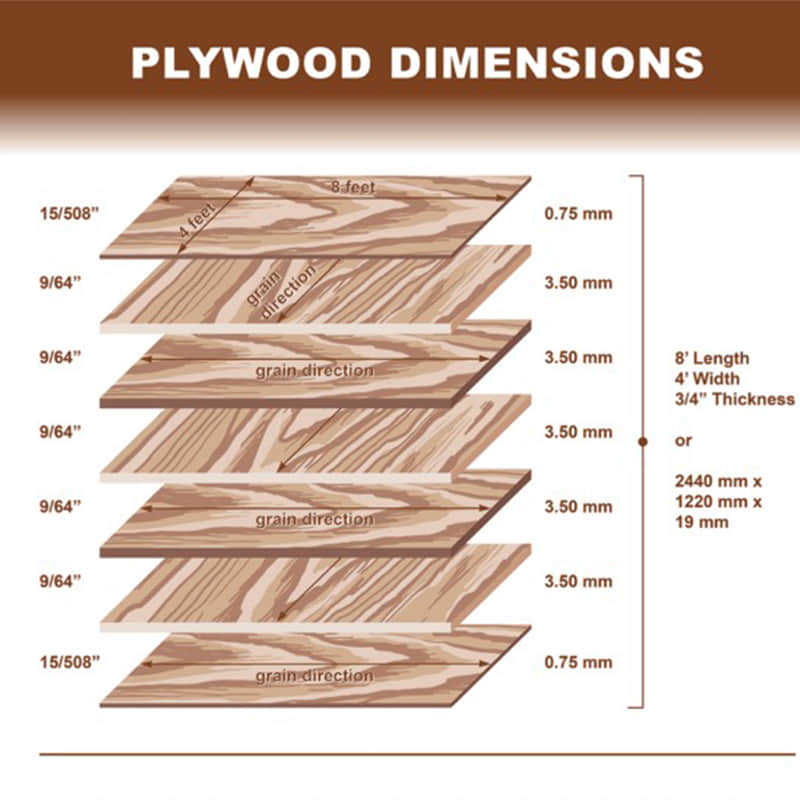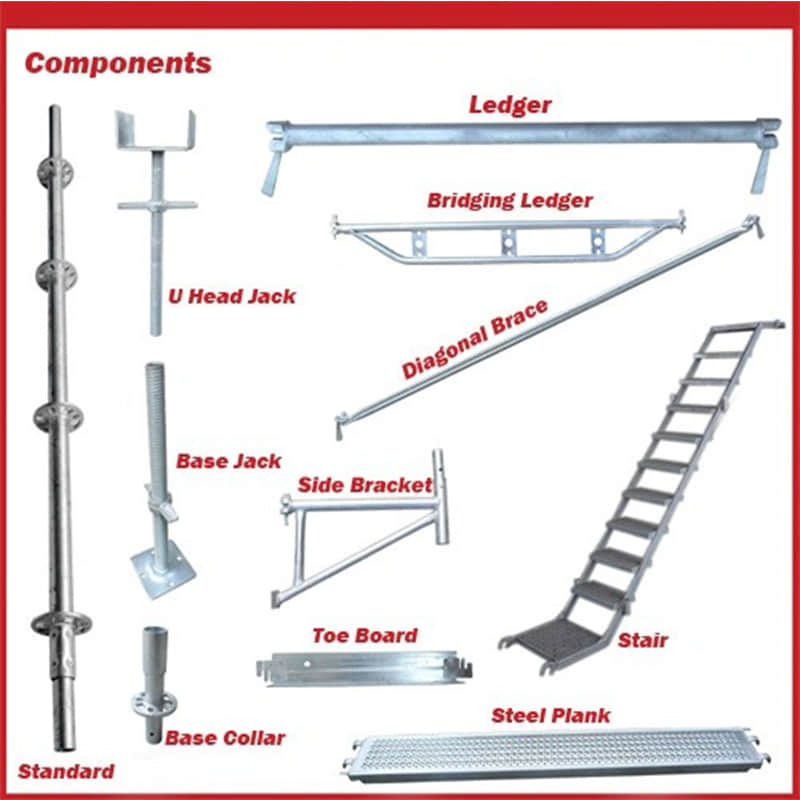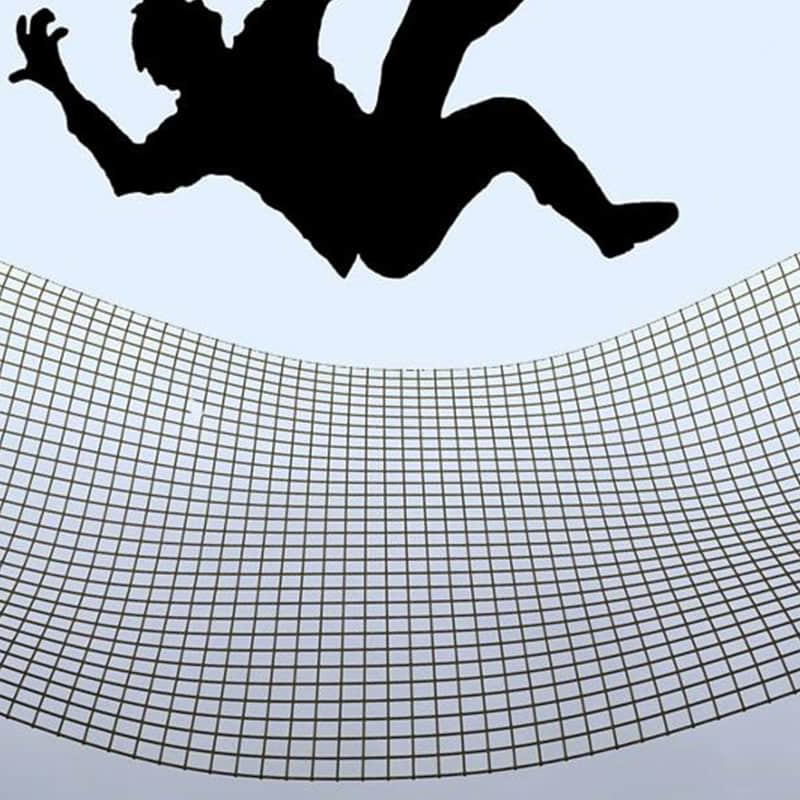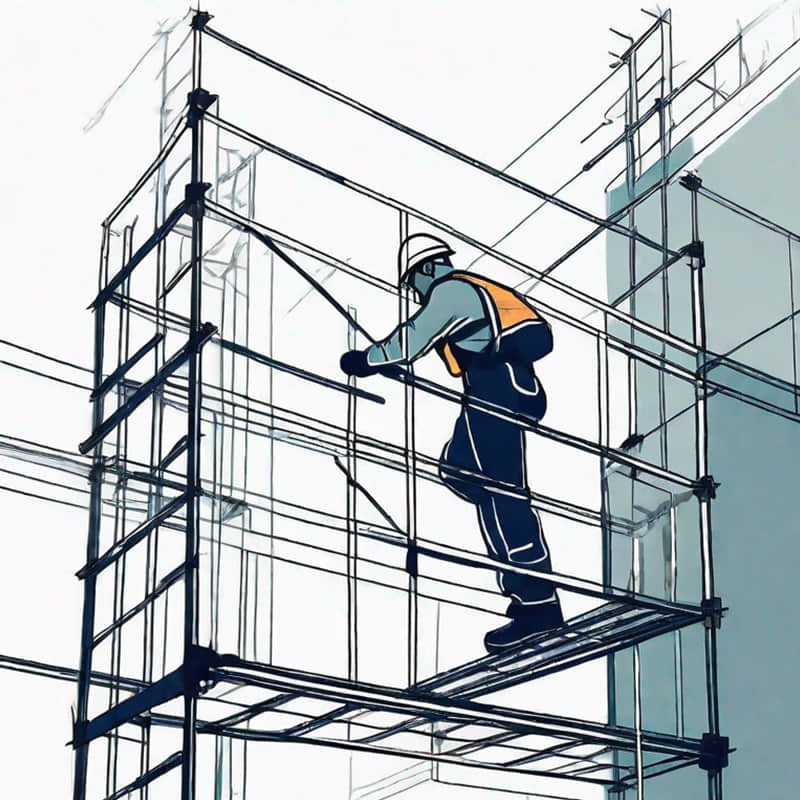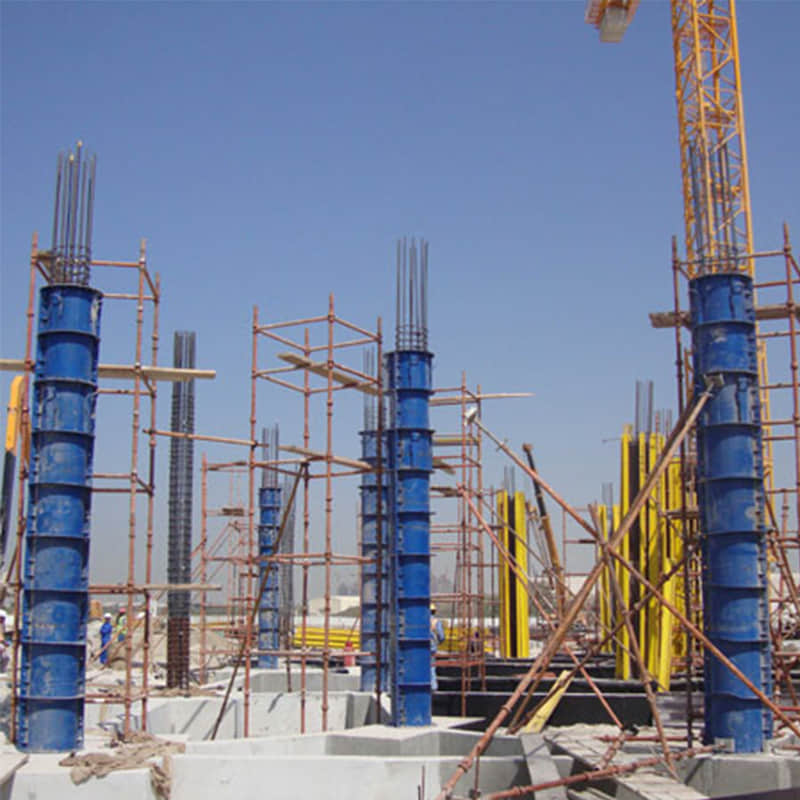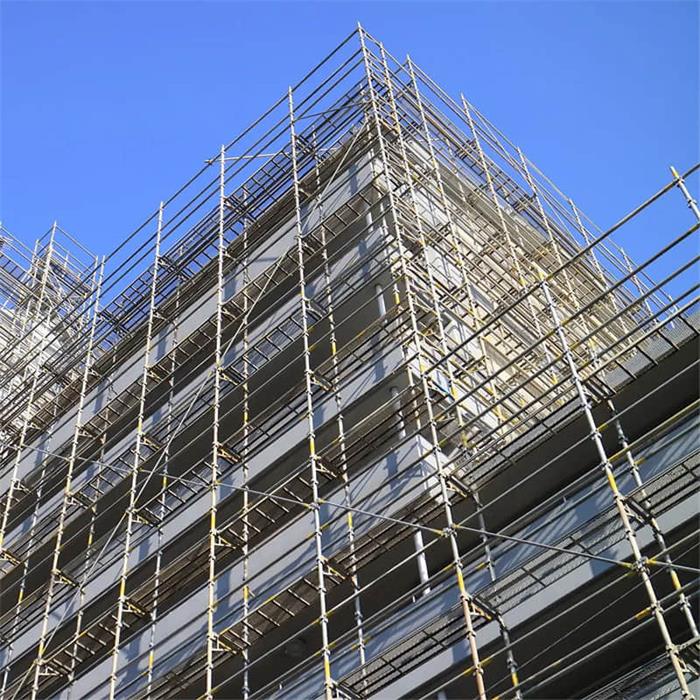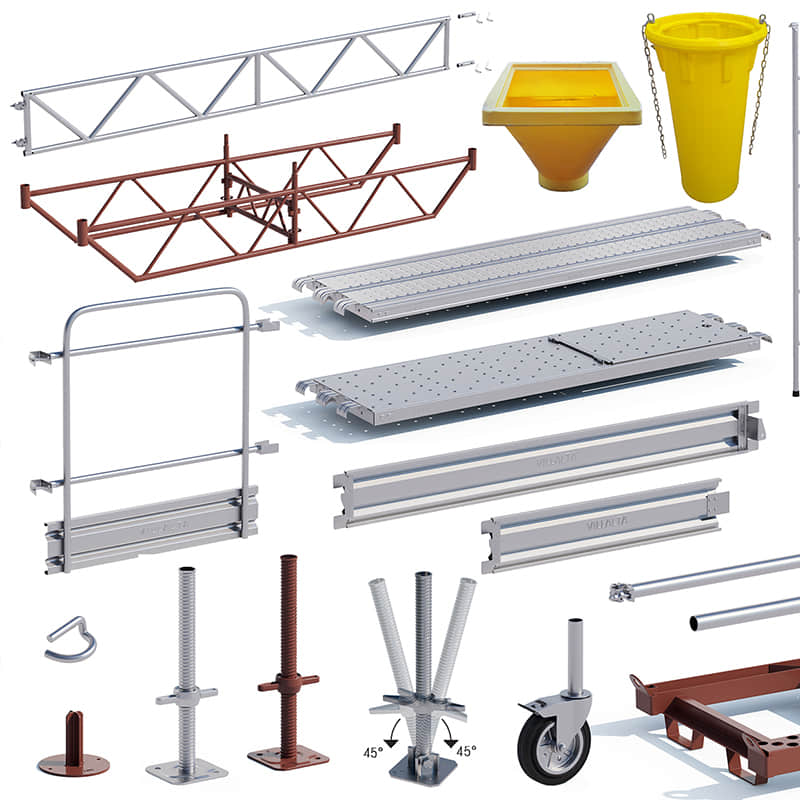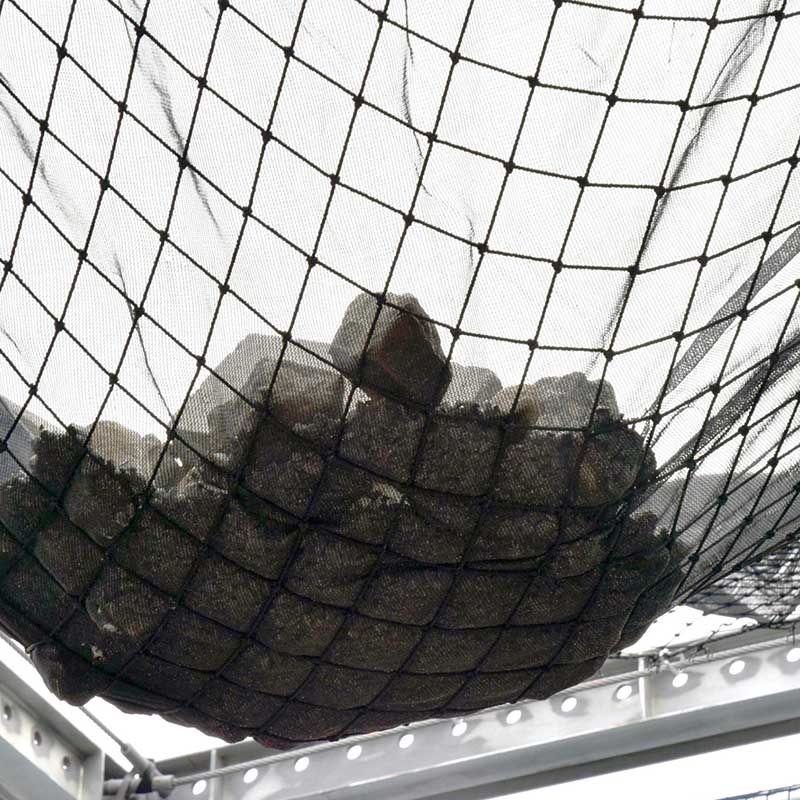The Importance Of Safety Net Drop Tests And How To Conduct Them
Jul 08, 2024
Safety nets are developed to prevent workers from falling and also to prevent construction materials and tools from falling, causing harm to the ground personnel and facilities. Fall tests are imperative to ensure that the safety net can play an important protective role at critical times. Testing a safety net is important because it simulates real conditions of falling and verifies the performance and reliability of the safety net, providing strong evidence and safety assurance for construction.
Importance Of Safety Net Drop Testing
To Protect Workers' Life
When workers are working at high places, the probability of falling is very high if they are not careful. Safety net, as the last protective barrier, is very effective in preventing workers from falling and protecting workers' lives. Statistics shows that the correct usage of safety nets can reduce 70% of high-altitude fall accidents.
Prevent Materials Falling From A Height
In construction, falling of materials and tools does threaten the construction site operators and it also cause the project delay and economic losses. Safety net can effectively catch falling objects and prevent such accident and loss.
To Improve The Safety Level Of The Construction Site
The application of safety nets not only directly protect the life safety of the workers and equipment, and it also enhance the whole safety of the construction site. Due to the decrease in accidents, construction efficiency will be improved.
Industry Standard
To ensure the quality and performance of safety nets, each country and region has formulated corresponding industry standards, which include the design, manufacture, testing, and use requirements of a safety net. The following highlights a few of the primary industry standards:
1. International standards
EN 1263-1:2014 details the physical properties and test methods of safety nets.
ISO 1806:2002 focuses predominantly on the test methods of mesh strength and nodal strength of safety nets.
2. American standard
OSHA 1926.502 details the specific requirements of safety net use at construction sites.
3. Chinese Standard
GB 5725-2009 outlines the specific requirements of the production and use of safety nets.
4. Additional standards
ANSI A10.11-1989(R1998) - ANSI, an American National Standard Institute developed a safety net standard for use mainly in the construction and industrial fields.
AS/NZS 1891.4:2009 - A safety net standard developed by Australia and New Zealand together, applied to the construction and industrial sectors of both countries.
Test Process And Equipment
To ensure the safety net is reliable and effective in real use, a strict drop test must be carried out. Here is the specific operation steps and needed equipment for drop test of safety net.
Preparation Before Test
Before the drop test, you need to do a few preparations, to ensure that the test goes smoothly and get real data.
Choose the testing site: the site should be flat, firm and have enough height and space to simulate the actual fall platform.
Checking the safety net: preliminary check the safety net which need to be tested, to ensure that the net has no major damage or defects.
Prepare the test objects: According to the standard regulations of select test objects of the appropriate weight and shape (such as sand bags or metal blocks) to simulate falling objects.
Required Equipment And Tools
To succeed in carrying out a safety net fall test, various specialized equipment and tools should be used to ensure the test is completed smoothly and the results are accurate, as illustrated below:
Test frame: This is used to secure and hold the safety net in place, which is typically constructed from robust metal material, and adjustable height and width so that it can hold a variety of sizes of safety nets.
Test object: An item used to "fall" in place of a person, normally a sandbag, or metal block of recognized weight which is used to test the energy absorption and weight-bearing capacity of the safety net.
Force sensor: one that measures the force upon the safety net during a fall, and records data for analysis.
Data recorder: that logs and stores the test data, including the force, speed of the fall object, energy absorbed, etc.
Video equipment: that records the test as a method of re-viewing and evaluation.
A Detailed Description Of The Test Steps And Processes
The detailed steps and description of processes on a safety net drop test are below:
Installation and braces of the safety net: To preform a drop test, the safety net, drop height, drop test rig and safety net installation should be installed properly and correctly, because the safety net needs to be properly installed and fixed at the correct height that is consistent with the method standard.
Checking of the installation: Upon the completion of the installation of the safety net, confirmation is required that the safety net is made ready from the manufacturer as per the method and not positioned or loose.
Preparation of the test object: Raise the unit of the test object or standard test object (e.g. sandbag, solid block) and let go.
Release/letting go of the test object: Release/letting go of the unit of the test object safely so it is prepared for the test and falls free into the safety net.
Data recording of the test: It is important to record the data from the drop test, that data is recorded on the force sensors and the data logging system while the object hits the safety net, typically it is recorded for velocity of the incoming object, the forces, energy that is captured.
Observation and recording: Record video footage for the complete drop test is recorded and all of the results are recorded and kept for later analysis and evaluation.
Assessment of the results: Examine and analyze the performance, quality of the safety net from the recorded data, video footage, in relation if the safety net it is presently within the standard specification.
Repeat the test: Perform a series of drop tests performed with the safety net to test the safety nets performance and to have valid and fullsome test results, therefore compare the results with previous test results with the same fixtures at the same height to ensure that the test results are in agreement with one another to ensure that at every further test, would there be consistency, variety and any of the test limitations or inaccuracies and the accuracy of the actual test.
Post-Test Processing
After test is completed, you must also complete some follow-up work as follows:
Safety net check: After the test is completed, check the safety net, record any damage or deformation.
Records and reports: After the test, organize the test data and records. After the completion of the test write a test report and save it for future reference and review of the relevant information.
Maintenance and repair: Based on test results, the safety net should carry out the necessary maintenance and repair commitments to ensure the safety and reliability of the safety net during actual use.
Damping Capacity And Force Measurement
In safety net fall tests, damping capacity and force measurement are essential indicators to evaluate the performance of the safety net, which refers to whether the safety net can provide enough protection. You can know whether there is sufficient protection by measuring the energy the safety net can absorb and the force it can withstand when you fall. Next will specifically introduce the energy absorption and force measurement content.
Analysis On The Absorption Capacity Of Energy
The absorption capacity of energy measures the absorbability of a safety net by measuring the energy that can be absorbed by the safety net when subjected to a fall, which reduces the impact on the dropping item and on the safety net itself. To measure the absorption capacity of energy, there are several steps to follow:
Select drop test object weight and height. Select the drop test object according to the standard requirements (such as a 50 kg sandbag or a piece of metal), then measure the selection of the drop height (generally more than 6 meters).
Calculate the energy potential. Prior to falling, the drop test object has a particular potential energy which can be calculated by the following: E= m × g × h
Where E is the potential energy, m is the weight of the test object, g is the acceleration of gravity (9.81 m/s^2 approximately) and h is the drop height.
Transmission of Kinetic Energy: When the object is falling during the testing process, its potential energy is transformed into kinetic energy. The safety net that is used must absorb the energy to stop the falling object from causing damage to people and objects below. Kinetic energy can be calculated by using the formula:
Among them, Ek is the kinetic energy and v is the velocity of the falling object.
Record energy absorption : Use force sensors and data loggers to record the energy absorbed by the safety net during the fall and analyze its energy absorption effect.
Force Measurement
Force Measurement refers to the assessment of maximum impact force of safety net that takes place if a fall takes place, which helps to determine the useful or load resistance force of the safety net. The general steps involved in force measurement are:
Installation of force sensors: Installation of force sensors in strategic locations on safety net such as on ropes and connection points, for accurate measurements of changes in force, when the safety net is subjected to a fall.
Release of test object: Force sensor starts to record force at the time when the test object falls as it is falling, to record the force conditions in real time, specifically the maximum impact value of force.
Data recording and analysis: To record the data from the force sensor, the data logger is used to analyze the data to understand how much force is applied to the safety net during its fall. Generally, the requirement of safety net is to sustain the force of maximum impact force multiple times and not fail. Colleagues are required to comply with the industry, and requirements for the safety net without fail.
Analysis And Interpretation Of Test Data
Data comparison: To test Wether for data, and compare the measured data with the requirements in the standards, innnn the industry to determine whether the performance of the safety net is qualified.
Performance evaluation: By using the data of energy absorption and force measurement, appraise on the overall performance of the safety net including energy absorption capacity, maximum impact force bearing capacity and durability.
Improvement suggestions: If the test reveals that the safety net does not reach the required performance, analysis of the reason is needed, and then we would have to provide the suggestion for the improvements like the change of material, optimization in design or to improvement the manufacture process.
Installing And Maintenance Of Safety Nets
Installation
For the installation of the net, professionally trained personnel should be used who are knowledgeable about the correct procedures to follow for installation of the safety net, and in accordance with the manufacturers guide line, to ensure the safety net complies with the relevant regulations and standards during installation. Before starting the installation and following which, the installation area should be checked to identify potential impact hazards that could damage the safety net or compromise the function of the safety net. No gaps or spaces between the safety net and the structure should be left unattended that could lead to an object or person falling.
Maintenance
During the maintenance period regular checks should be undertaken to establish the safety net retains its integrity and the net is still capable of securing a fall event should it occur. Particular attention should be taken in adverse weather conditions or after heavy usage where damage or wear impairing the effectiveness of the safety net would need to be repaired or replaced to maintain the integrity and the integrity of the safety net for reliable long term safety.
Network Number And Grid Size
Net ID is the most common representation of the safety net manufacturer, production batch and specific models of the safety net. Each safety net is usually given a unique number to track and manage its production and use. Grid size refers to the size of each mesh on the safety net and usually is measured in millimeters (mm) or inches (inches).
Different Grid Sizes Application Scenarios
Small Grid (10-50mm): Suitable for the protection of small tools and small objects for delicate work, such as detailed construction and decoration work, where there are narrow joints and the like.
Medium Grid (50-100 mm): Commonly used in general construction and aerial work, it can protect the common falling objects such as bricks, wood and other materials in construction and aerial work which is also commonly used in a construction environment.
Large Grid (above 100 mm): Suitable for protecting large items, and occasions with large falling items limited in the protection of larger falling objects. Suitable for large device installations and where items are heavier.
Effects Of Uv Degradation On Safety Nets
Safety nets are normally used outdoors, so they are usually exposed to sunlight, which for a large number of materials with which they are manufactured have an negative effect on the material life of the safety net. Understanding the effects of UV degradation and taking appropriate preventive measures can also prolong the life of the safety net and guarantee that the safety of the safety net stays healthy.
Destructive Effects Of Ultraviolet Rays On Safety Net Materials
Ultraviolet radiation can cause the following destructive effects on safety net materials:
Molecular chain breakage: Ultraviolet energy is high, which can destroy the molecular structure of polymer materials, causing molecular chain breakage, making the material brittle and reducing strength.
Color change: Long-term exposure to ultraviolet rays will change the color of the safety net material, usually fading or yellowing, affecting the appearance and recognition.
Performance degradation: Over time, the mechanical properties of the material (such as tensile strength and impact resistance) will gradually decay, affecting the protective effect of the safety net.
How To Prevent And Reduce Uv Degradation
In order to prevent and reduce the degradation caused by UV rays, here are some suggestions:
Choose UV resistant materials: When buying a safety net to purchase, choose a material with UV and weather resistance, such as polymers with added UV stabilizers greatly improve the safety net's weather performance.
Coating protection: Coating the safety net with an anti-UV coating will form a protective barrier to reduce the direct damage caused by ultraviolet rays to the material.
Regular replacement: It is necessary to replace the safety net regularly according to the use environment, and the cycle of use to avoid the safety net not functioning properly due to long-term use.
Safety Net Testing Cost-Effectiveness
When safety nets are first used, they must be tested. The cost of testing is significant, but it is useful in preventing accidents and offsetting the costs of companies, both in lawsuits and settlements, including medical expenses and lost wages. In addition, work safety can be improved, legal and financial risks can be reduced, and personnel security can be improved.
The Essential Role Of The Worker In Safety Net Inspection:
Workers play an essential role in safety net inspection, with some duties falling beyond inspection, but still relevant to the safety net inspection, of the safety net:
Rope boundary testing, which involves checking the rope for fraying, cuts, kinks, or any damage that could render the net not viable.
Check for any impairments to the safety net, which may affect cutting, tears and / or punctures in the safety net that can reduce the functioning of the net.
Test the safety net limits by performing 'drop tests' by dropping a weighted bag to test that the net can withstand a falling worker.
Report an incident by making verbal reviews or reports in writing stating what has happened and do not use the safety net until it is fixed.
Conclusion
Safety net usage in construction around overhead construction to safeguard lives and properties from falling objects is an absolute necessity. The financial significance of implementing safety nets is significant. The installation will also require drop tests. Maintenance is essential prior to installation. Regular maintenance prevents the failure of a safety net. A drop test is necessary for the service life assessment for industrial safety standards.
FAQ
How Often Should Safety Nets Be Drop Tested?
Safety nets should be drop tested before each use or every 6 months.
What Is The Standard For Safety Netting?
Safety nets have different standards in different countries
What Is The Lso Code For Safety Net?
IS 11057: Industrial Safety Nets
Relevant Information
Safety Net --- WIKIPEDIA
Safety Nets At Construction Sites --- ANSI
Which Safety Netting Type Is Right For Your Construction Site? --- INCORD
